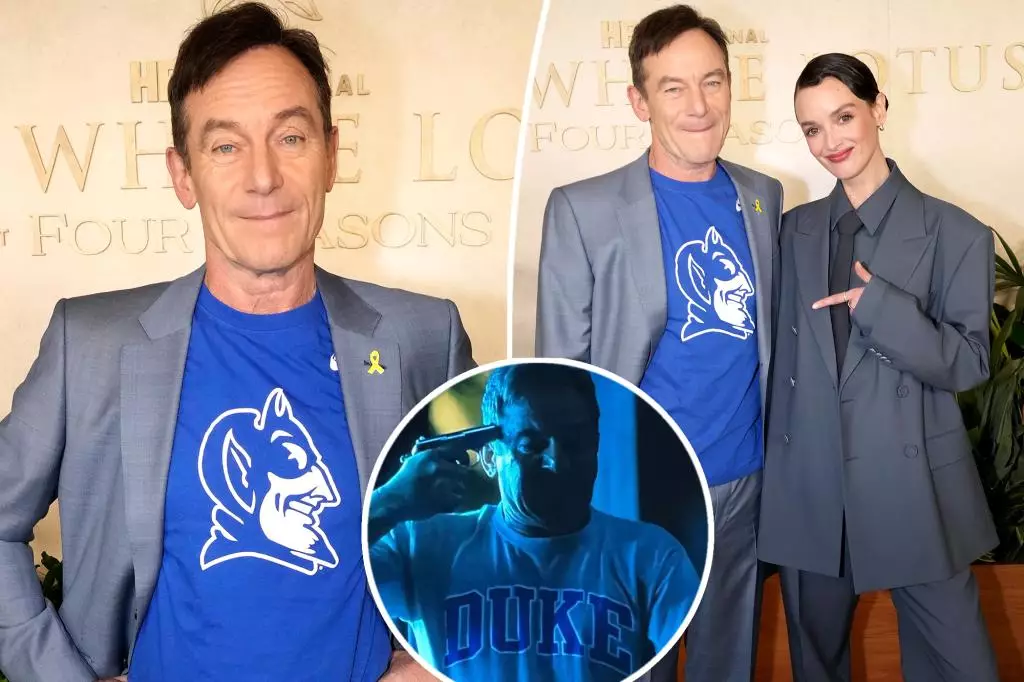At the recent finale of HBO’s “The White Lotus,” actor Jason Isaacs made a striking statement by donning a gray suit layered over a vibrant blue Duke University T-shirt. This attire choice was more than just a fashion moment; it represented a bold display of character loyalty amidst controversy. Isaacs’ character, Timothy Ratliff, has become a topic of conversation not only for his on-screen antics but also for the backlash against the series from Duke University itself.
Duke’s concerns stem from the use of its logo in the show, which the institution claims misrepresents its values. In Episode 5, viewers witnessed a jarring scene where Ratliff contemplates suicide while showcasing Duke branding. This portrayal led Duke’s vice president, Frank Tramble, to issue a statement denouncing the show’s depiction of its imagery, arguing that it incorrectly suggests an endorsement of themes that do not align with the university’s mission. Isaacs’ nonchalant embrace of the Duke shirt at the finale, in light of this criticism, seems to further amplify the message that artistry often walks a fine line between representation and ridicule.
Cinematic Expression vs. Institutional Identity
The tension between creative storytelling and institutional integrity raises a crucial point for discussion. While artistic expression often thrives on controversy, the impact of that expression can evoke strong reactions from institutions that feel misrepresented. Tramble’s statement highlights a growing concern among organizations about how their branding is portrayed in popular media. Are storytellers being irresponsible, or is this the price of artistic freedom? Isaacs’ rebellious sartorial choice arguably supports the narrative of an artist standing firm against institutional repression—an essential aspect of culture that often ignites public discourse.
The rapid ascent of Isaacs’ character into meme culture, especially during events like March Madness, shows how interconnected media can be with real-life reactions. His brand of humor in the face of controversy serves not only to resonate with avid viewers but also to challenge audience perceptions. It raises the question: how does one decipher the line between character representation and influencer responsibility?
Star Power and the Fashion Scene
The finale event served as a celebration of style, with other cast members embracing their characters through fashion as well. Patrick Schwarzenegger opted for a sophisticated white pinstripe suit, while Charlotte Le Bon embraced boldness with a Gucci suit and tie presentation. Each ensemble speaks to the personalities within their roles, contributing to the overall narrative fabric of the series. Fashion in television often transcends beyond mere aesthetics; it provides insights into character development and even social commentary.
As “The White Lotus” wraps up its third season, Isaacs uses this spotlight not only to honor his character but also to bring public attention to broader discussions regarding representation, brand ethics, and the art of storytelling in a sensitive era. The intersection of pop culture and institutional branding invites mounting debate, and it’s a conversation that will undoubtedly linger long after the credits roll.

